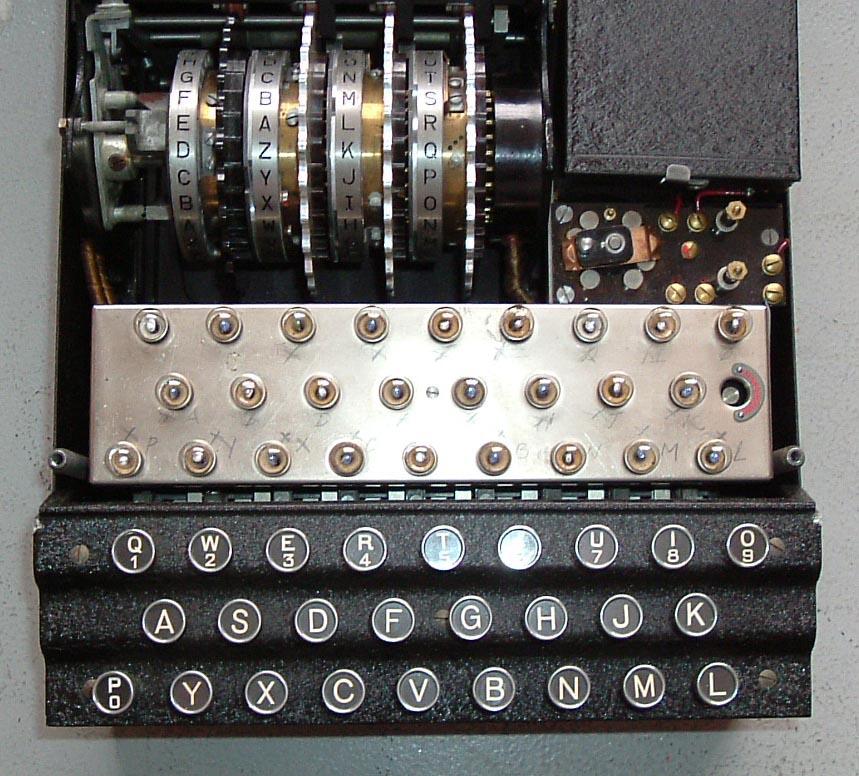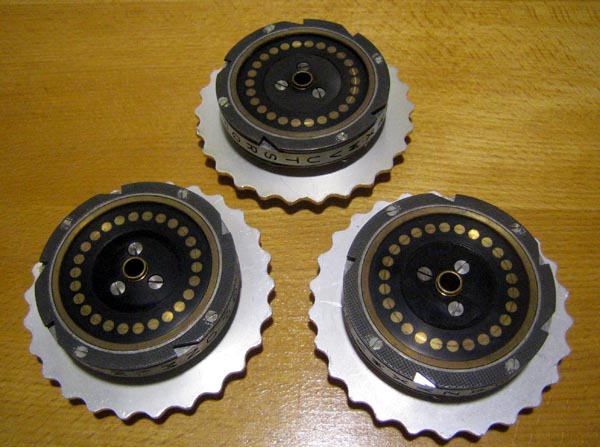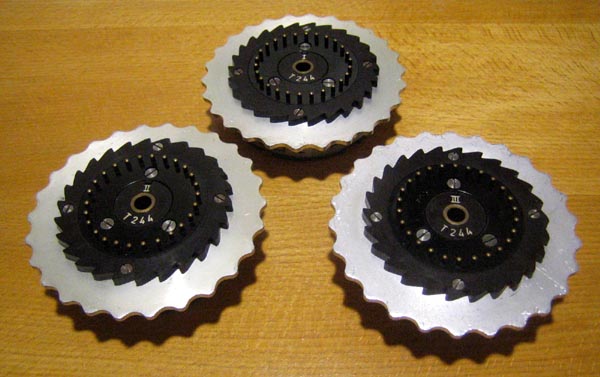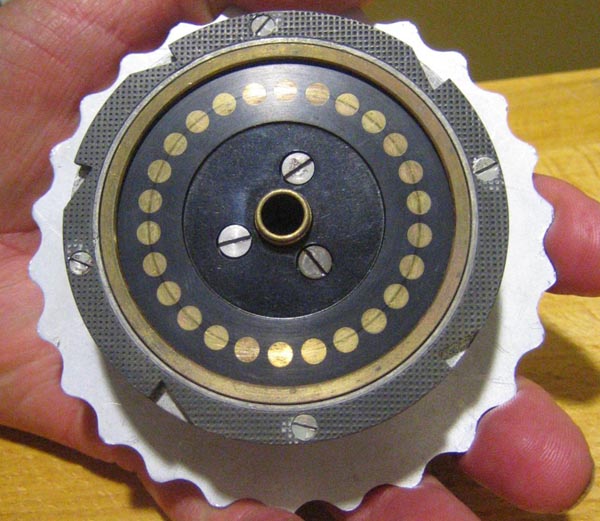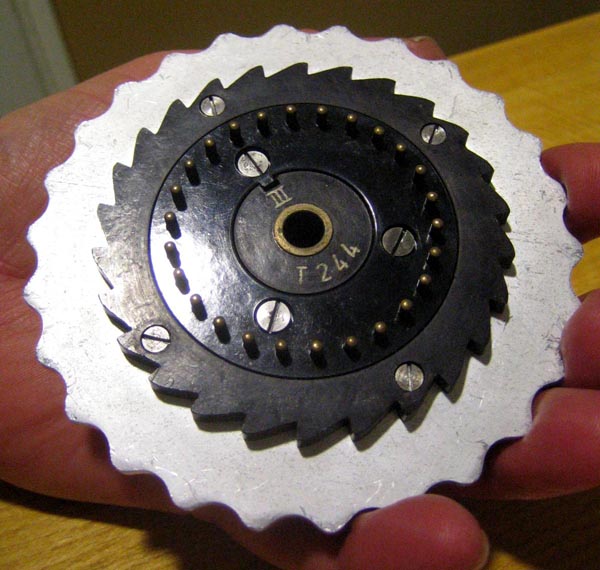THE TIRPITZ IN MORE DETAIL
John Alexander has kindly provided a transcription from the following
document:
[Document marked] ‘TOP SECRET “ULTRA”
[National Archive Dept] /HW
[Series] 43
[Piece] 41
G.C. & C.S. NAVAL CRYPTANALYTIC STUDIES
VOL. XVI
JAPANESE NAVAL ATTACHÉ MACHINE CYPHERS
- By –
L.E.M. TAYLOR
L.S. BROWN
A.L. YOXALL
C.E. THOMPSON
JAPANESE NAVAL ATTACHÉ MACHINE CYPHERS 278
STUDY 52
JNA 1 – THE TIRPITZ ENIGMA
- by –
C.E. THOMPSON
JNA 1 – THE TIRPITZ ENIGMA 279
CONTENTS
Paragraph Page
1 Narrative 280
2 Characteristics of the Text 281
3 Terminology 281
4 The Machine Described 281
5 The Key-lists 282
6 Settings and Indicators 282
7 The First Break-in: Initial deductions 282
JNA 1 – THE TIRPITZ ENIGMA 280
1. The Tirpitz or “T” Enigma was produced in Germany for Japanese
use and during 1944 references were made in JNA 20 to the delivery of the
machines. In August, a cargo including a consignment of Enigma Machines
was sent to Lorient to await shipment to Japan by submarine, but it was
still there when the Allied advance had enveloped the surrounding country
and left Lorient as an isolated pocket. The Americans made a raid
on the port and carried away a crate of sixty Enigma machines in the back
of a Jeep. The Japanese knew nothing about this, and were in fact
subsequently told by the Germans that the whole cargo had been destroyed.
But other consignments had been delivered, and in September Berlin suggested
distributing the machine to attachés in Sweden, Switzerland, Spain
and Portugal. Tokyo agreed, and on 20th September sent out detailed
instructions in JNA 10 as to how the machine was to be used. The
first message in JNA 1, as it was called, was sent from Berne on 9th April
1945. Altogether, fifty-three messages were intercepted up to 15th
May, when the traffic died. When the collapse of Germany seemed imminent
and the central German administration was planning to evacuate Berlin,
the Japanese Naval Attaché staff split into two groups. One
group followed the Germans south to Badgastein, the other made for the
Danish frontier and later crossed to Sweden. Both groups carried
an Enigma machine, as the Coral had to be abandoned in the Berlin office.
Characteristics of the Text
2. The text of the messages was transmitted in five-letter
groups preceded by two five-figure groups. The first of the figure
JNA 1 – THE TIRPITZ ENIGMA 281
Groups was the customary three-figure serial number and two-figure
indication of whether the message was a complete telegram or one of a number
of parts. The second group began with two-figures which were either
both odd or both even. These remained unexplained, but it was noticed
that the only two instances of even pairs appeared on messages not sent
to Tokyo. The second two figures gave the date (01 to 31) and the
last figure was a priority discriminant.
Terminology
3. It must be emphasized here that JNA 1 was a special use
of a common cypher, the Enigma, and it is only interesting as a deviation
from the general trend and not as an independent study. The following
details of the machine and the attack made on it are therefore written
for the reader who is already acquainted with the general principles of
the solution of the unsteckered Enigma, and the terminology current in
the trade has been carefully preserved.
The Machine Described
4. The Tirpitz in an unsteckered machine with a movable Umkehrwalze
and a hatted diagonal. There are eight wheels, three of which are
used at a time. Each wheel has five turnovers distributed round the
ring according to one of four patterns, so that there are two wheels to
each turnover pattern. In operating the machine, the Japanese adopted
the usual practice [2] of moving the Umkehrwalze forward one position by
hand after the encypherment of every five-letter group.
____________________________________________________________
[2] Such arbitrary hand advancement of machine wheels is called
“Finnery”, the first observed cases being of the Finns’ treatment of their
Hagelin machines. Other Hagelin users also used this trick but apparently
BP first discovered this habit on the Finnish Hagelin links.
JNA 1 – THE TIRPITZ ENIGMA 282
The Key-lists
5. The key-lists were concocted from JNA 10 encode book.
In this book, the code groups are given as five-figure groups and also
as five-letter groups derivable from the figures by means of a garble table.
The wheel order and Ringstellung for the day were determined respectively
by the figure and letter equivalents in the JNA 10 encode for the date
of transmission (month and date of the month). The first three figures
(passing over 0, 9 and repeated figures) determined which of the eight
wheels were to be used and in which order, and the first four letters determined
how the rings were to be set.
Settings and Indicators
6. When a message was to be enciphered, a window setting was
chosen, apparently at random, for example X Q G B. This was encyphered
on a pre-arranged Grundstellung in the form X Q G B B G Q X. Suppose
the enciphered version was L D W C P J L Q, then the groups L D I W O and
P J L T Q would be the indicators for the message (the underlined letters
being dummies), and L D I W O would precede the transmitted text and P
J L T Q would follow it. The Grundstellung were the first four letters
of groups in the section of the encode devoted to ships. The recoveries
in this section were so fragmentary that the system of selection could
not be traced. All that is known is that a given group could serve
as a Grundstellung for only one station and for only one day. Thus,
if Berne and Tokyo both sent messages on the same day, they would use the
same wheel order and rings, but different Grundstellungen
The First Break-in: Initial Deductions
7. The main attack on the traffic was launched when two messages
were received which were suspected of being retransmissions of texts
JNA 1 – THE TIRPITZ ENIGMA 283
already deciphered on JNA 20. One of the messages was sent
in JNA 1 in two parts of considerable length. The state of knowledge
before the cribs from JNA 20 were applied to this. The traffic could
not be definitely associated with Tirpitz, but there were two factors in
favour of the assumption: the traffic was sent from posts known to
have been allocated the machine, and a comprehensive frequency count of
the texts did not exclude the possibility that the cypher had the non-crashing
characteristics of the Enigma. It must be added that the second factor
contributed very little, as strip cyphers such as JNA 22 were also non-crashing,
and it was suspected that more versions of the strip cypher might appear.
With special reference to the cribs, the clear messages in JNA 22 had the
same spelling and punctuation symbols as in JNA 20, so that it seemed likely
this would be true of JNA 1. By such deductions and analogies, three
initial assumptions were made:
(a) The Tirpitz machine was being used as it had been captured;
(b) The clear text was spelt and punctuated as in JNA 20; and
(c) The text had not been deliberately paraphrased between the two
encypherments.
Contributors and Credits:
1) John Alexander G7GCK Leicester,
England. <jalex_uk(at)ntlworld.com>
2) Frode Weierud <Frode.Weierud(at)cern.ch>
3) Mike Hillyard , UK.
Back To Menu



